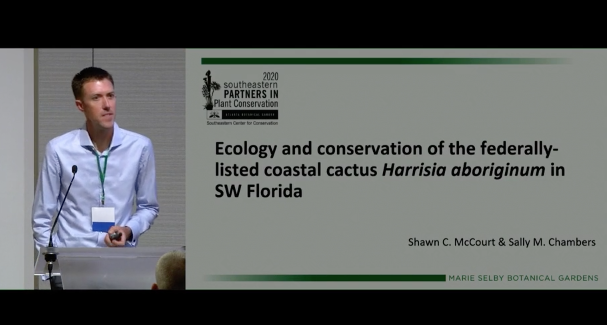
Shawn C. McCourt, Sally M. Chambers, and Bruce K. Holst, Marie Selby Botanical Gardens The genus Harrisia (Cactaceae) comprises 20 narrowly endemic species of night-blooming cacti with two widely separated geographic ranges, including South America south of Amazonia, as well as the West Indies and southern Florida. Commonly known as aboriginal prickly-apple, H. aboriginum is […]
Read More…
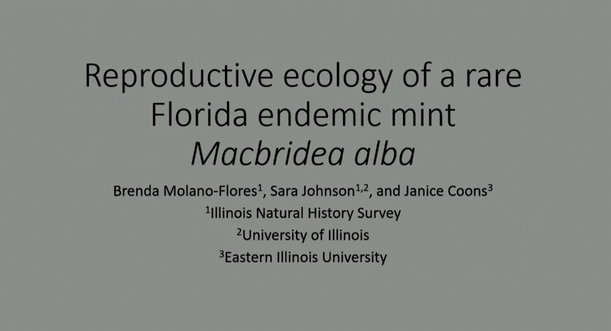
Brenda Molano-Flores, Illinois Natural History Survey, University of Illinois: Urbana-Champaign, Sara Johnson, Department of Natural Resources and Environmental Science at University of Illinois: Urbana-Champaign, & Janice Coons, Eastern Illinois University Macbridea alba (Lamiaceae) is a federally threatened and state endangered perennial herbaceous mint. It is endemic to grassy pine flat woods and occupies a range […]
Read More…
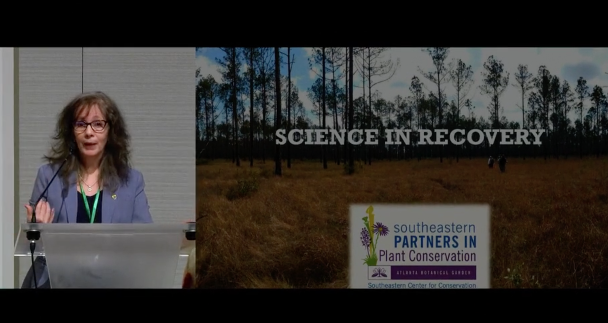
Dr. Vivian Negrón-Ortiz, U.S. Fish & Wildlife Service, Ms. Melanie Kaeser, U.S. Fish and Wildlife Service To protect and manage species listed under the U.S. Endangered Species Act requires the use of the best available science. Field-based studies on topics such as demography, reproductive biology, and seed ecology have provided sound conservation strategies for many […]
Read More…
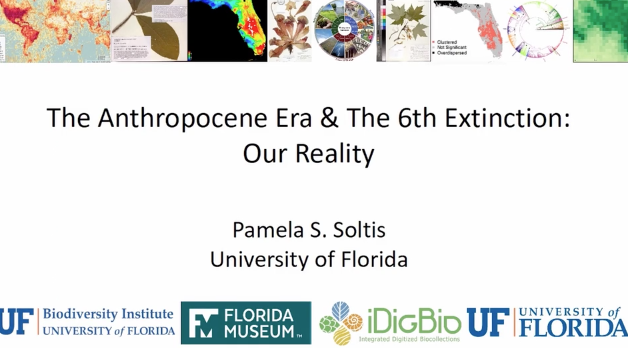
Dr. Pamela S. Soltis, Founding Director of University of Florida Biodiversity Institute, Distinguished Professor and Curator at the Florida Museum of Natural History We are living in a new geological era, termed the Anthropocene, in reference to human impact on our planet. This impact has led to extinction rates that are 1000 times higher than […]
Read More…
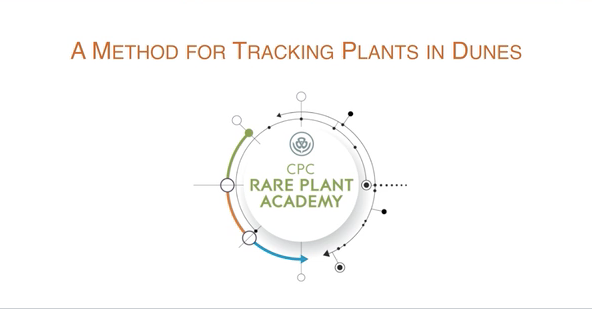
Jennifer Possley, Fairchild Tropical Botanic Garden Since coastal dunes have constantly shifting sands, tracking individual plants over many years can be challenging. Fairchild Tropical Botanic Garden began working with a federally endangered plant called Beach Clustervine in the late 1990s. This long-lived species grows only in the coastal strand area of coastal dune communities in four […]
Read More…
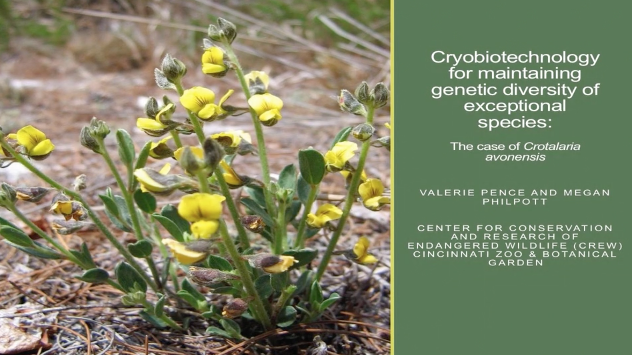
Valerie Pence and Megan Philpott, Cincinnati Zoo & Botanical Garden Crotalaria avonensis is a Florida endemic found in three populations and characterized by low seed production. In the late 1990s, CREW developed protocols for tissue culture propagation from field collected shoot cuttings as well as cryopreservation methods. In order to develop a genetically representative collection […]
Read More…

Emily E. D. Coffey, Ph.D., Atlanta Botanical Garden Torreya taxifolia, known as the Florida Torreya, is one of the rarest conifers in the world. Once found as a canopy tree, Torreya is an evergreen dioecious tree endemic to a narrow range of bluffs and ravines adjacent to the Apalachicola River in northwest Florida and extreme […]
Read More…
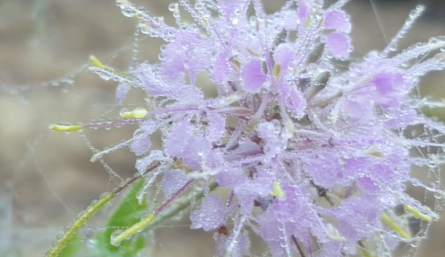
Philip Gonsiska, Whitney Costner, Cheryl Peterson, Bok Tower Gardens Warea amplexifolia (Clasping Warea) (Brassicaceae) is an annual endemic to sandhill habitat in the northern third of the Lake Wales Ridge in central Florida. It typically germinates between February and early May and flowers from August through October. The main threats to W. amplexifolia are development […]
Read More…
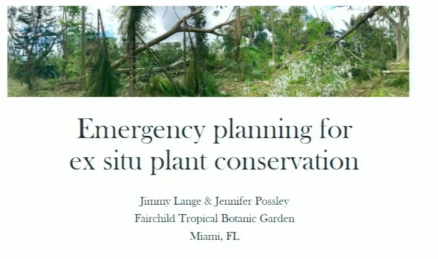
James Lange and Jennifer Possley, Fairchild Tropical Botanic Garden In the event of a hurricane, low elevation and proximity to the coast place Fairchild at high risk, and thus contingency plans must be in place to preserve our ex situ collections. Anticipating severe damage and extended power loss from Hurricane Irma, we took several measures […]
Read More…








